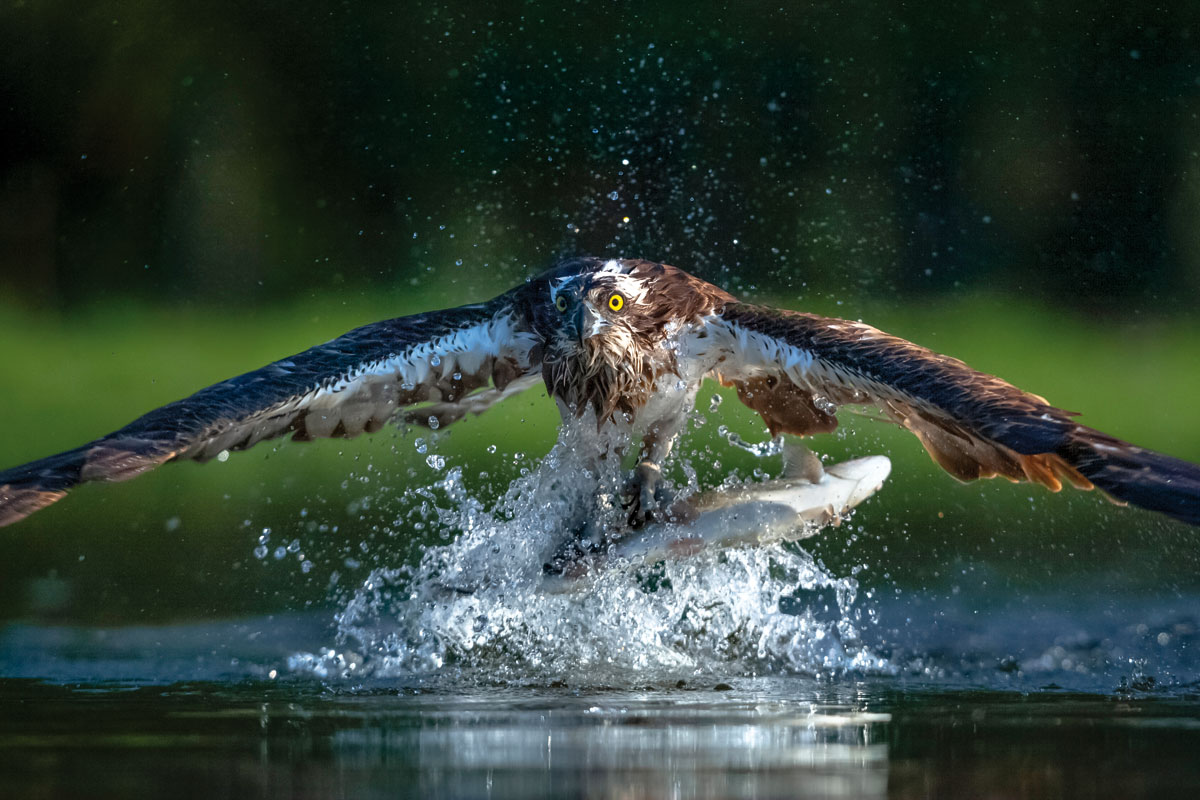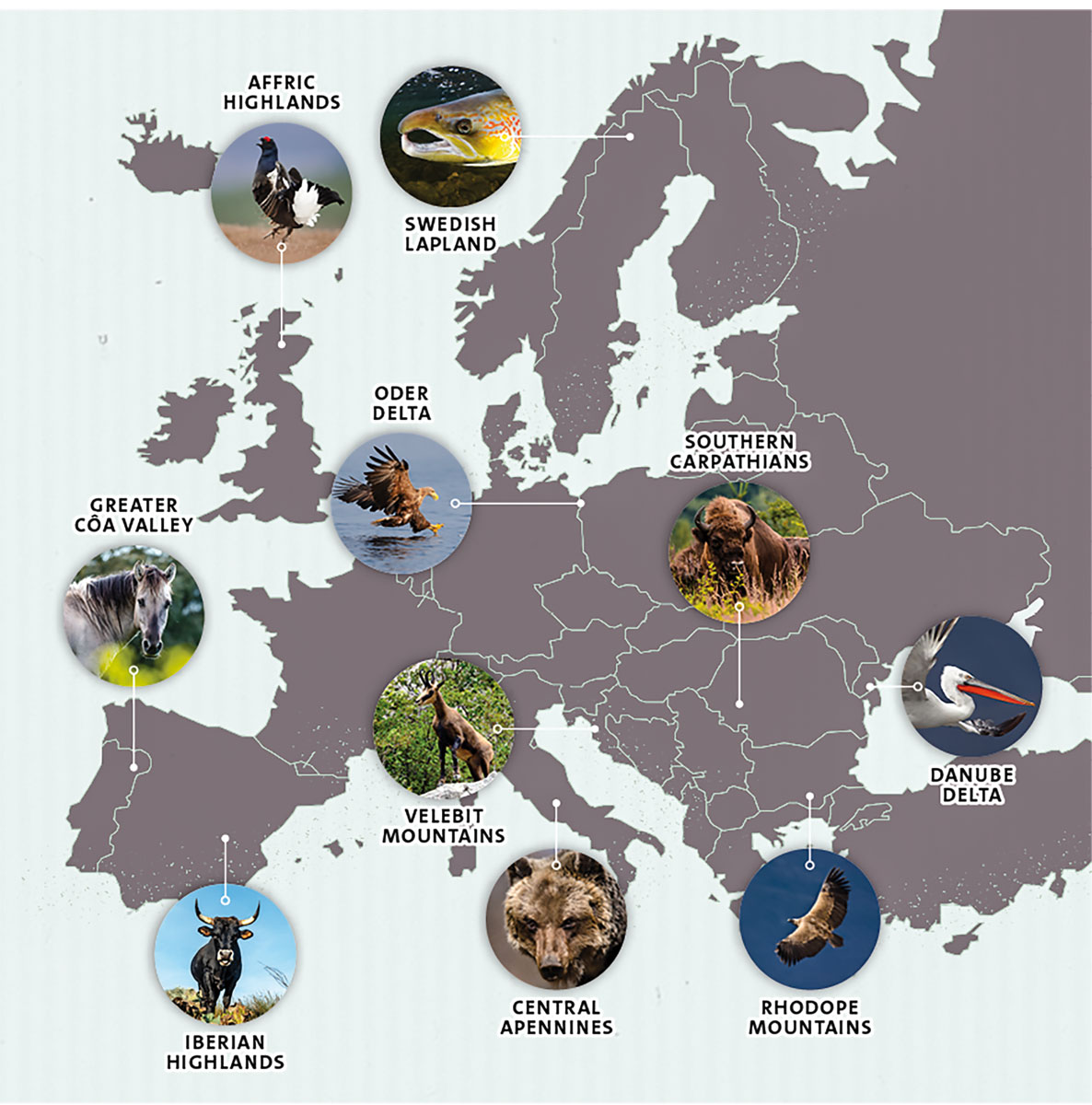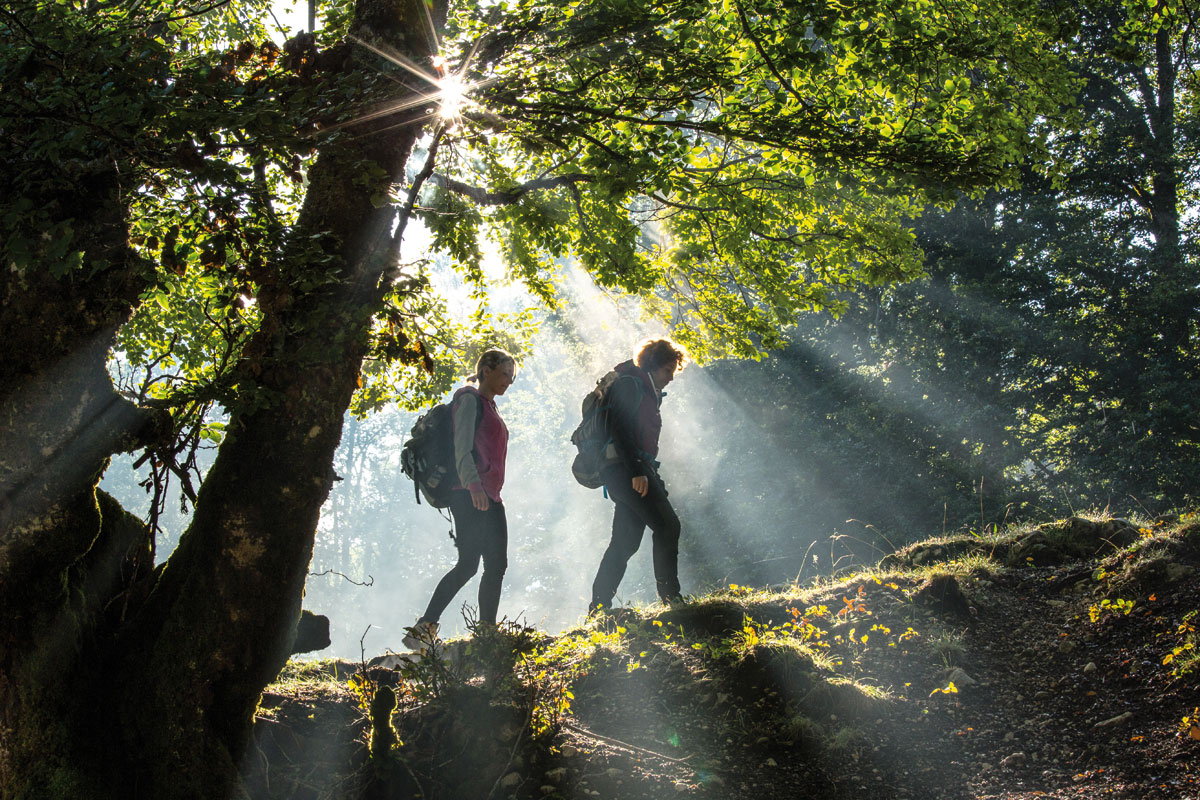Taking Nature Recovery To The Next Level
First published in Sanctuary Asia,
Vol. 43
No. 10,
October 2023
By Daniel Allen
Support for European rewilding has never been greater than it is today. Those engaged in practical rewilding are finding ways to overcome a range of challenges as they work to scale up nature recovery for the benefit of all.
Today, European rewilding is gathering momentum as a vibrant movement of conservationists and citizens seeking a counterweight to our increasingly regulated lives, landscapes and nature. It signifies a desire to rediscover the values of freedom, spontaneity, resilience and wonder embodied in Europe’s natural heritage, and to revitalise nature as a way of addressing many of society’s most pressing challenges.
Founded in 2011, Rewilding Europe has established itself as an international initiative, operating at the frontline of European rewilding. From the Ukrainian Danube Delta in the east to the Greater Côa Valley in Portugal in the west, we are currently rewilding 10 large landscapes across Europe, with the aim of expanding to 15 by 2030.

Scotland’s Caledonian Forest, which is now being restored, is home to iconic species such as the Osprey Pandion haliaetus. Photo: Neil Aldridge/Rewilding Europe.
Our goal is to see rewilding practised at a large scale across the continent, with the application of rewilding principles, models and tools delivering measurable, demonstrable and sustained benefits for nature and people. By inspiring, supporting and collaborating with a broad coalition of partners – from other rewilding initiatives and NGOs to philanthropic organisations and big business – we want to create a Europe that is far richer in nature and more resilient to climate change, and where healthy wildlife populations help support thriving nature-based economies.
Rewilding Europe has already made considerable progress towards achieving this goal. Nevertheless, there is still a huge way to go before European rewilding realises its game-changing potential. Today, those engaged in rewilding across Europe face a wide range of challenges – from the conceptual to the political and practical.
Paradigm Shift
Perhaps the greatest overarching challenge facing those involved in European rewilding relates to a concept known as ‘shifting baseline syndrome’. With environmental degradation taking place at local, regional, and global scales over decades and centuries, people’s accepted thresholds for the state of nature around them are continually being lowered. A lack of awareness about how European landscapes and their wildlife populations looked in the past means that their condition today is simply accepted by most Europeans as how things should be.
In Scotland, for example, where our Affric Highlands rewilding landscape is situated, most people think that hillsides denuded of trees are completely natural. In fact, the ancient Caledonian Forest – a temperate and wildlife-rich forest comprised of species such as Scots pine, juniper, rowan and aspen – once covered much of the country. As a result of widespread clearance, the planting of non-native tree species, and grazing pressure from unnaturally high deer populations, it now covers less than 200 sq. km. This decline has had a hugely negative impact on Scottish wild nature, and is only now starting to be reversed.
One of Rewilding Europe’s key roles is to demonstrate practical rewilding and its benefits in our operational landscapes. Through our efforts on the ground, backed by effective communications, we are working to change the established European mindset that the intensive management of nature is both normal and desirable. As a result, more and more people are coming to understand that restoring natural processes, and giving nature the space and freedom to manage itself, is the best way to preserve and revitalise Europe’s rich biodiversity. And, much more than this, the best way to ensure that nature can keep delivering the wide range of benefits on which Europeans depend – from clean air and fertile soil, to the locking up of atmospheric carbon and enhanced health and wellbeing.

By inspiring, supporting and collaborating with a broad coalition of partners, Rewilding Europe aims to create a Europe that is far richer in nature and more resilient to climate change. Photo: Rewilding Europe.
Prioritising People
It is important to emphasise that rewilding is as much about people and communities as it is about nature. Many parts of Europe are characterised by rural depopulation, as people who once lived in the countryside move to the city. Today, 40 per cent of Europeans live in cities and 32 per cent in suburbs and towns, while only 28 per cent live in rural areas. If trends continue, half of the total EU population will live in a city by 2050. This dynamic is also evident in India, where the pace of urbanisation is rapidly accelerating.
The negative impacts of rural depopulation are both numerous and pervasive. Local economies decline and jobs become scarcer. Schools, shops and hospitals are forced to close. Cultural heritage is eroded. As land is abandoned and livestock disappears from the landscape, a lack of grazing leads to encroachment by shrubs and other combustible vegetation. This not only lowers biodiversity, but heightens the risk of catastrophic wildfire outbreaks, which are becoming increasingly common in Europe’s Mediterranean regions as our climate heats up. Rewilding Europe is working to reintroduce free-roaming herbivores such as wild horses and European bison in many of its rewilding landscapes because their low-intensity grazing helps to clear such vegetation as well as to enhance biodiversity.
Rewilding is not a panacea, but it can help to address all of these issues. Across many of our operational landscapes, we are working to show how nature recovery, enabled by rewilding, can generate new business opportunities, jobs and income – particularly in rural areas. By integrating rewilding objectives into business plans, we are supporting a growing number of enterprises and communities in the development of nature-based economies.
Our work in Portugal’s Greater Côa Valley, which is characterised by rural depopulation, exemplifies this. Here, the Rewilding Portugal team has established the Wild Côa Network – an association of more than 40 like-minded local enterprises (from guesthouses to handmade natural product sellers), who share a vision for a wilder and more sustainable future. The team is also reintroducing wild and semi-wild herbivores, such as horses and Tauros, into the landscape (the Tauros is a bovine specifically bred to perform a similar ecological role as the long extinct aurochs – the wild ancestor of all domesticated cattle). In addition to boosting local nature-based tourism, these iconic grazers are helping to reduce the risk of catastrophic wildfire by consuming combustible vegetation, which has built up as livestock numbers have declined.
A Counterproductive Policy Space
Europe’s policy environment poses another challenge for those involved in rewilding. The recent passing of the so-called ‘Nature Restoration Law’, which establishes legally-binding nature restoration targets for EU Member States, offers significant hope for the future. On the flip side, however, the European Union’s hugely influential Common Agricultural Policy (CAP) continues to promote intensive and less sustainable farming practices. In doing so, it largely ignores the benefits that natural grazing with wild and semi-wild herbivores – a key natural process that Rewilding Europe is working hard to scale up – could provide. Such benefits include improved biodiversity, enhanced carbon sequestration, and better protection against catastrophic wildfire outbreaks.
The negative impact of the CAP is particularly evident in our Rhodope Mountains rewilding landscape in Bulgaria, where it is leading to the intensification of grazing and hampering rewilding efforts. Together with other NGOs, Rewilding Europe will continue to call for better political support for natural grazing in European landscapes. The Rewilding Europe-coordinated GrazeLIFE initiative (2018-2021), which considered the Rhodope Mountains as one of its study areas, has already outlined how European policies – particularly the CAP – could better support extensive grazing.

By supporting the development of nature-based tourism, rewilding can benefit rural European communities facing socio-economic challenges. Photo: Bruno D’Amicis/Rewilding Apennines.
Joined-Up Thinking
While trends such as rural depopulation continue to see many Europeans relocate, Europe is still a densely-populated continent overall. Infrastructure development and agricultural intensification are the main drivers of declining European biodiversity owing to multiple stressors, particularly fragmentation of habitats.
Connectivity is an essential element of healthy, properly functioning ecosystems. Animals and plants need to be able to move easily and securely between natural areas to survive, thrive, and adapt to shifting climate zones. Rewilding Europe is working hard to create safe corridors in many of its rewilding landscapes, enhancing connectivity to further support the wildlife comeback that is already happening in Europe, and enabling mobile species to adapt to climate change.
An example of this approach can be found in our Central Apennines rewilding landscape in Italy. Here, the development of ‘coexistence corridors’ by the local rewilding team and partners is enabling endangered Marsican brown bears and other wildlife species to move safely through populated areas, while simultaneously enabling local communities to benefit economically from the resurgent wild nature around them.
Today, some of the challenges facing European rewilders are unique to the continent, while many are faced by rewilders in other parts of the world. As the European rewilding movement continues to develop, those engaged in rewilding – including Rewilding Europe – are learning how to overcome these challenges in order to scale up nature recovery and its associated benefits as quickly as possible.
Daniel Allen is an award-winning writer and photographer based in the U.K., with a focus on rewilding and conservation. He works for Rewilding Europe as the initiative’s lead writer and editor.




